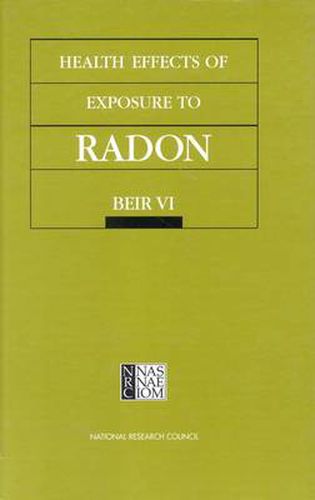Readings Newsletter
Become a Readings Member to make your shopping experience even easier.
Sign in or sign up for free!
You’re not far away from qualifying for FREE standard shipping within Australia
You’ve qualified for FREE standard shipping within Australia
The cart is loading…






Radon progeny - the decay products of radon gas - are a well-recognized cause of lung cancer in miners working underground. When radon was found to be a ubiquitous indoor air pollutant, however, it raised a more widespread alarm for public health. To develop appropriate public policy for indoor radon, decisionmakers need a characterization of the risk of radon exposure across the range of exposures people actually receive. In response, the BEIR VI committee has developed a mathematical model for the lung cancer risk associated with radon, incorporating the latest information from epidemiology and scientific studies. In this book the committee provides a fresh assessment of exposure-dose relationships. The volume discusses key issues - such as the weight of biological evidence and extrapolation from radon-exposed miners to the larger population - in estimating the risk posed by indoor radon. It also addresses such uncertainties as the combined effects of smoking and radon and the impact of the rate of exposure. The committee considered the entire body of evidence on radon and lung cancer, integrating findings from epidemiological studies with evidence from animal experiments and other lines of laboratory investigation. The conclusions will be important to policymakers and environmental advocates, while the technical findings will be of interest to environmental scientists and engineers.
$9.00 standard shipping within Australia
FREE standard shipping within Australia for orders over $100.00
Express & International shipping calculated at checkout
Radon progeny - the decay products of radon gas - are a well-recognized cause of lung cancer in miners working underground. When radon was found to be a ubiquitous indoor air pollutant, however, it raised a more widespread alarm for public health. To develop appropriate public policy for indoor radon, decisionmakers need a characterization of the risk of radon exposure across the range of exposures people actually receive. In response, the BEIR VI committee has developed a mathematical model for the lung cancer risk associated with radon, incorporating the latest information from epidemiology and scientific studies. In this book the committee provides a fresh assessment of exposure-dose relationships. The volume discusses key issues - such as the weight of biological evidence and extrapolation from radon-exposed miners to the larger population - in estimating the risk posed by indoor radon. It also addresses such uncertainties as the combined effects of smoking and radon and the impact of the rate of exposure. The committee considered the entire body of evidence on radon and lung cancer, integrating findings from epidemiological studies with evidence from animal experiments and other lines of laboratory investigation. The conclusions will be important to policymakers and environmental advocates, while the technical findings will be of interest to environmental scientists and engineers.